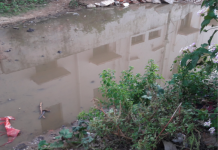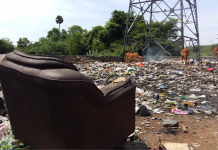Picturesque Perungudi
While Besant Nagar is known for its calm beach and its pious church, Mylapore for its devoted temples, ECR for the adrenaline pumping ride, and Koyambedu for its vegetable market, Perungudi is known for its ‘dump yard’!
Unfortunately, this ‘identity’ has affected people living in Perungudi in the past, is affecting them in the present and will affect the residents of Perungudi and others in the future if nothing is done about it.
THE PAST SCENARIO:
In the past, it was said that Perungudi was quite uninhabited unlike the encroachment today. It was once a Mango grove. During this time, a lot less waste was dumped into this ‘dump yard’ and it was definitely much smaller than what it has mounted up to be today. Sadly, as the mango groves were replaced with towering apartments , the amount of garbage dumped in started to increase simultaneously.
The resident had written a letter to the mayor mentioning the issues faced by the inhabitants of Perungudi. A lot of us believe(d) that the government had not taken action towards cleaning the dump yard, and we’re so WRONG! The government has actually had everything ready to clean the sky high mounts of waste. From the methods to the people required such as experts, they had everything to start cleaning, but, due to unfortunate events, the mayor had resigned and the work had to stop there.
THE STAKEHOLDERS OF MY ISSUE:
The number one stakeholder to face the outcome of the piles of garbage is the dump yard workers, like the garbage pickers. Breathing becomes difficult for them due to the contaminated environment! Also, there is a school situated less than 50 meters from the dump yard, and, as per my interviewee, her daughter who studied there had suffered from asthma frequently.
It is also a problem for people living in Perungudi.
Not only humans, but even birds, fishes, frogs and snakes were affected by this scenario. Due to the increase in size of the dump yard, they encroached the lake almost completely, leaving patches of water to be seen randomly in the huge piece of land! The birds have to now sit on cable wires and there are hardly any fish to be seen. As a result of this, frogs and snakes seemed to have been in hiding or have disappeared, due to their food chain disruption.


THE PRESENT SCENARIO:
The present scenario is worse than the past! The dump yard which was supposed to be about 270 acres has extended to be roughly about 340 acres now!

Even though the government has had everything planned out, the plan needs to be put into action so, here’s what I’ve done:-
There are solutions to solving this problem as I have very recently discovered. To start solving the issue of the Perungudi dump yard affecting people, I have started small by creating awareness on waste segregation.
Currently, (thanks to Karthavyam) I have started to take action based on this issue. I, along with Sheetal aunty (a person who has worked on this problem and has expert knowledge on how to solve it) have started an environment awareness club in our apartment. We have talked to some mothers about the dump yard issues and decided that waste management has to be taken seriously. We have educated the mothers about the different bins and in which type of waste goes into which bin. For example: the cooking waste goes into the bio-degradable waste bin, whereas the plastic into the “recycle” bin.
I have talked to the children of my apartment about the importance of segregation, types of waste and the bins. We are going to perform a skit based on waste segregation next month and create more awareness about it.
WHAT OTHER COUNTRIES HAVE DONE:
SWEDEN: Less than 1% of Sweden’s household rubbish reaches their dump yard. Almost all citizens of Sweden separate all recyclable waste in their homes and deposit it in special containers in their blocks in their apartment or drop it off at a recycling station. Recycling stations are placed no more than 300 meters from the residential areas. ”Importing garbage for energy is good business for Sweden” says a worker.
DUTCH: The Dutch approach is simple: avoid generating waste as much as possible, recover the valuable raw materials from it and generate energy by incinerating the remaining waste, and only then dump what is left over – but to do all of this in and eco-friendly way. This approach is known as ‘Lansink’s Ladder’ after the Member of the Dutch Parliament who proposed it – was incorporated into Dutch legislation in 1994 and forms the basis of the ‘waste hierarchy’ in the European Waste Framework Directive.
SWITZERLAND: To help encourage recycling, numerous local communities have introduced a rubbish bag tax system. Rubbish bags have to carry a sign – a sticker or a sign printed on the bag that the tax has already been paid. Recycling is generally free. Only a small part of their waste ends up in landfill sites. It has been prohibited since 2000 to throw combustible or chemically unstable materials into landfill sites.
THE FUTURE SCENARIO:
Looking at the state of the dump yard, it will take quite a while to ensure that everyone segregates waste and the dump yard is getting cleaned. However, it is not impossible to achieve a state of cleanliness on par with the other countries.
As per my research, we can clean the whole dump yard in just about 3-4 months in a completely eco-friendly way! We will need about 4000 rupees per acre of land ,after which cleaning the dump yard in 4 months in an entirely eco-friendly way is something noteworthy, leaving a positive thought that the dump yard is possible to wipe out. So, I think that we will definitely have a picturesque Perungudi and there will be many people segregating waste with the increased awareness!






